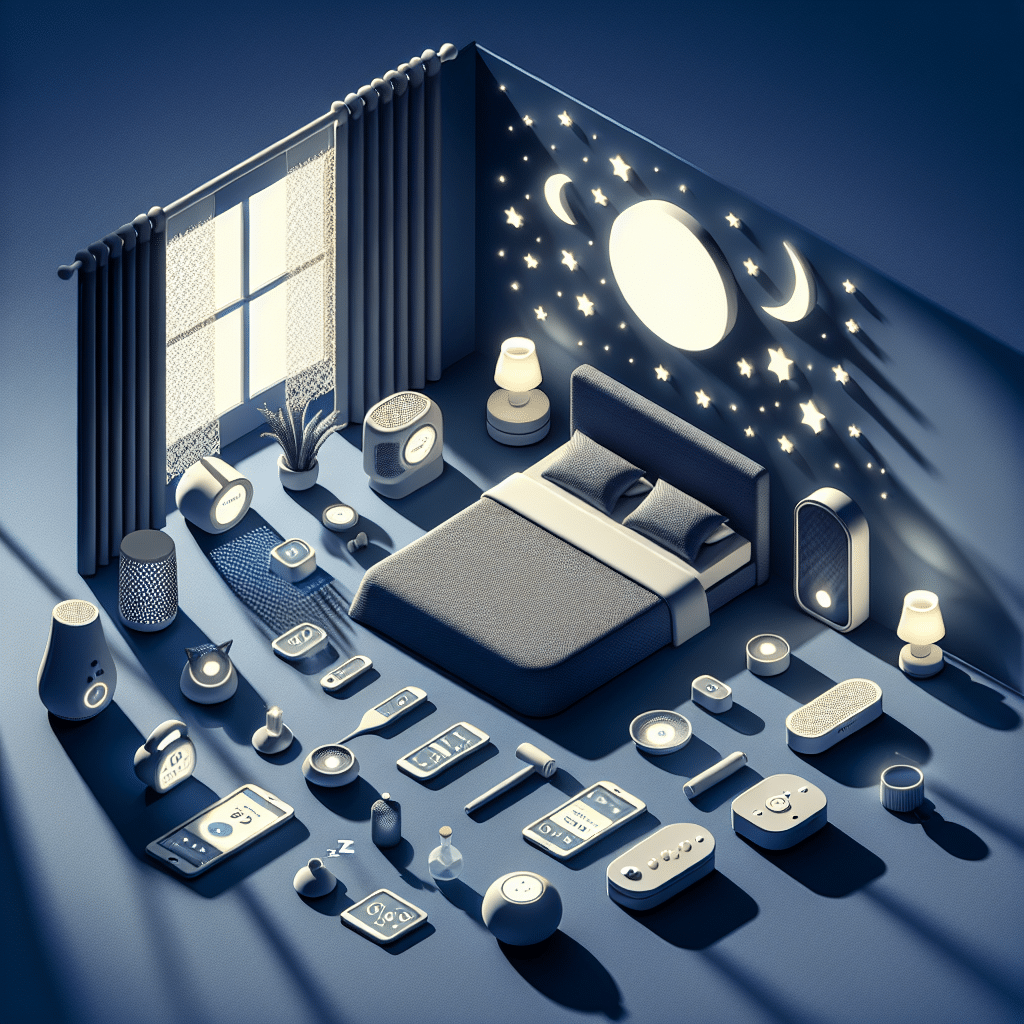Understanding Sleep Efficiency
Sleep efficiency refers to the percentage of time spent asleep while in bed, measured against the total time spent in bed. High sleep efficiency indicates that an individual falls asleep relatively quickly and remains asleep throughout the night. The goal is to achieve 85% or higher, which promotes better mental and physical health.
The Importance of Sleep Quality
Quality sleep is essential for optimal functioning. It enhances cognitive performance, mood regulation, immune function, and overall health. Unfortunately, many people struggle with insomnia or disrupted sleep patterns, leading to diminished sleep quality. Advanced technology offers innovative solutions to improve sleep efficiency.
Sleep Tracking Devices
Smartwatches and Fitness Trackers
Devices like Fitbit and Apple Watch monitor sleep patterns by tracking heart rate, movement, and sometimes even blood oxygen levels. They provide insights into sleep stages—light, deep, and REM sleep. By analyzing this data, users can understand their sleep habits, identify disturbances, and adjust their routines accordingly for better sleep efficiency.
Sleep Apps
Mobile applications, such as Sleep Cycle and Calm, use algorithms to analyze sleep patterns. They often harness sounds, vibrations, or alarms that sync with sleep cycles, ensuring wake-up moments occur during lighter sleep phases. This reduces grogginess and increases overall wakefulness.
Smart Mattresses and Sleep Surfaces
Adjustable Firmness
Smart mattresses, like those from Sleep Number or Purple, allow users to adjust firmness levels for optimal support. Proper spine alignment can significantly enhance sleep quality by reducing pain or discomfort during the night, thus improving sleep efficiency.
Temperature Control
Bedding technology has advanced with the introduction of cooling and heating layers. Products like the OOLER Sleep System facilitate temperature regulation, as temperature plays a crucial role in sleep. Cooler room environments generally promote deeper sleep, while overheating can lead to discomfort and awakenings.
Sleep Environment Optimization
Smart Lighting
Circadian rhythms are influenced by light exposure. Smart bulbs, such as Philips Hue, can be programmed to mimic natural light patterns. Warmer, dimmer lights in the evening signal the body to wind down, while brighter, cooler lights help promote wakefulness during the day. Correctly scheduled light exposure can align sleep cycles and enhance efficiency.
Noise Control
Sound disturbances can severely impact sleep quality. White noise machines or smart speakers can generate soothing sounds that mask disruptive noises, providing a more peaceful sleep environment. Devices like the LectroFan or apps like Rain Rain help create a consistent sound environment.
Sleep-Enhancing Wearables
Sleep Masks
Advanced sleep masks, such as those from MZOO, include features like Bluetooth speakers and blackout capabilities. These masks create a dark and quiet environment, which is essential for promoting REM sleep. They can help travelers and light sleepers achieve uninterrupted sleep, improving their overall sleep efficiency.
Sleep Headphones
Wearable headphones, such as Bose Sleepbuds, are designed specifically for sleep. They offer comforting sounds or soothing white noise. The gentle auditory environment aids in reducing anxiety, which is often a barrier to falling asleep, thus enhancing sleep efficiency.
Biofeedback and Smart Technology
Emwave and HeartMath
Devices focused on biofeedback, such as Emwave, monitor heart rate variability to assess stress levels. Guided breathing exercises are then provided to help calm the mind and body before sleep. Using such devices can lower anxiety, facilitating improved sleep efficiency.
Smart Sleep Masks
Certain sleep masks come equipped with sensors that monitor eye movement and cortisol levels. Apps connected to these masks analyze the gathered data and provide personalized feedback, allowing users to create effective bedtime routines aimed at enhancing sleep quality and efficiency.
Routine and Behavioral Integration
Sleep Hygiene Tracking
Many sleep devices integrate features that encourage better sleep hygiene. Users can set optimized sleep schedules, eliminating screens before bed and suggesting relaxing activities. Devices like the Philips SmartSleep Wake-Up Light also help wake users gradually, reducing morning grogginess and improving sleeping patterns.
Gamification of Sleep Health
Apps with gamification elements encourage users to adhere to good sleep practices. These tools create rewards for consistent sleep patterns and track progress over time, enhancing motivation to achieve optimal sleep efficiency.
Cognitive Behavioral Tools (CBT-I)
CBT-I apps, such as Sleepio, offer structured programs that help users address behavioral sleep issues. Guided interventions alleviate insomnia symptoms, aiding users to counteract anxiety and improve their sleeping habits over time. These programs often use a combination of educated self-reflection and sleep tracking insights.
Conclusion
Enhancing sleep efficiency through devices involves a multifaceted approach that combines tracking, environmental optimization, and behavioral modifications. Understanding and utilizing technology can significantly elevate sleep quality, enabling individuals to reap the benefits of restorative rest. By leveraging these advancements in sleep technology, anyone can work toward achieving a more restful, restorative slumber.
